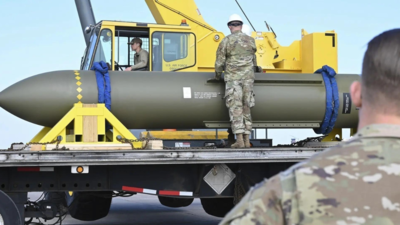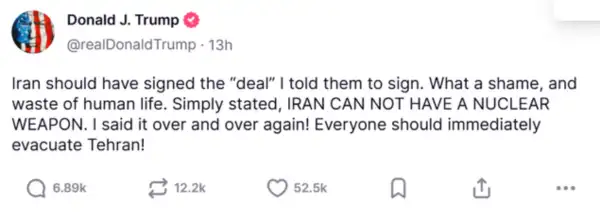
With tensions escalating between Israel and Iran, the focus has shifted to one of the most heavily guarded sites in the Islamic Republic: the Fordow nuclear facility, buried deep within a mountain.
Designed specifically to survive conventional attacks, Fordow represents a critical node in Iran’s nuclear program — and destroying it is central to any serious effort to cripple Tehran’s ability to develop nuclear weapons. But there’s a catch- only the United States possesses a weapon capable of penetrating that mountain.Also read: Why Iran’s Fordow nuclear site is critical; how could Israel try to take it out?And with the US President Donald Trump repeatedly claiming the Iran "should not have a nuclear weapon", that too in all caps on Truth Social, Israel and the States seem to be on the same page.

What is the 'bunker-buster' bomb?
Known officially as the Massive Ordnance Penetrator (MOP), this 30,000-pound bomb is a feat of engineering tailored for one purpose — to annihilate deeply buried and fortified targets. Commonly called a “bunker-buster,” it was developed after intelligence revealed adversaries like Iran and North Korea were moving critical infrastructure, including nuclear programs, underground to avoid airstrikes.
- Size & structure: 20 feet long and weighing 30,000 pounds, the MOP has a reinforced steel casing rather than a large explosive payload. This design enables it to remain intact while punching through dozens of feet of concrete, soil, or rock before detonating.
- Delivery system: Because of its massive size, only the B-2 Spirit stealth bomber — a US-exclusive aircraft — can carry and deploy the weapon.
'U.S.' Bunker Buster Bombs...': Israeli Journalist Reveals IDF's Big Plan; Khamenei's Nuclear Game
Why it matters for Israel
Israel has long expressed concern about Iran’s nuclear ambitions, particularly after the International Atomic Energy Agency (IAEA) reported in 2023 that uranium at Fordow had been enriched to 83.7% purity — just below the 90% threshold needed for a nuclear weapon.
But while Israel has advanced fighter jets and intelligence capabilities, it lacks both the MOP and the aircraft needed to deliver it. The US has historically declined to provide this bomb to Israel, fearing it could trigger a broader regional war."We've had a policy for a long time of not providing those to the Israelis because we didn't want them to use them," said General Joseph Votel, commander of US Central Command during Trump's first term.Instead, the US has used its possession of the MOP as a deterrent, signaling to Iran that its underground facilities are still vulnerable.

What have been Israel’s alternative plans
Without access to the MOP, Israel has developed contingency plans to cripple Fordow indirectly:
- Striking support infrastructure: Israeli forces could target power generation and transmission sites that feed Fordow, disrupting operations even if the main facility remains intact.
- Covert operations: Israeli commandos might attempt to infiltrate and sabotage the site — a tactic Israel has used before, most notably in Syria, where they destroyed a Hezbollah missile factory.
- Sealing off access: Another option includes destroying entrances and tunnels, rendering the facility inaccessible.
How difficult is it to target Fordow?
Fordow is Iran’s second nuclear enrichment site after its main facility at Natanz. To date, there’s no indication that Israeli strikes have damaged Natanz’s underground enrichment halls, nor have they targeted the tunnel networks Iran is constructing nearby.Smaller than Natanz, Fordow is embedded into a mountainside near the city of Qom, roughly 60 miles (95 kilometers) southwest of Tehran. Construction is believed to have begun in 2006, and the facility became operational in 2009—the same year Iran officially revealed its existence.

Deeply fortified beneath approximately 80 meters (260 feet) of rock and earth, Fordow is also reportedly shielded by surface-to-air missile systems supplied by both Iran and Russia.
However, those air defenses are believed to have already been compromised in recent Israeli airstrikes. Despite its formidable protection, Israeli Prime Minister Benjamin Netanyahu has emphasized that the mission to target Iran aims to dismantle its nuclear and missile programs, which he views as an existential threat. According to Israeli officials, Fordow remains a key objective in that broader strategy.Also read: Why Israel needs Donald Trump to take out Iran's nukes - Explained

 10 hours ago
52
10 hours ago
52




























 English (US)
English (US)